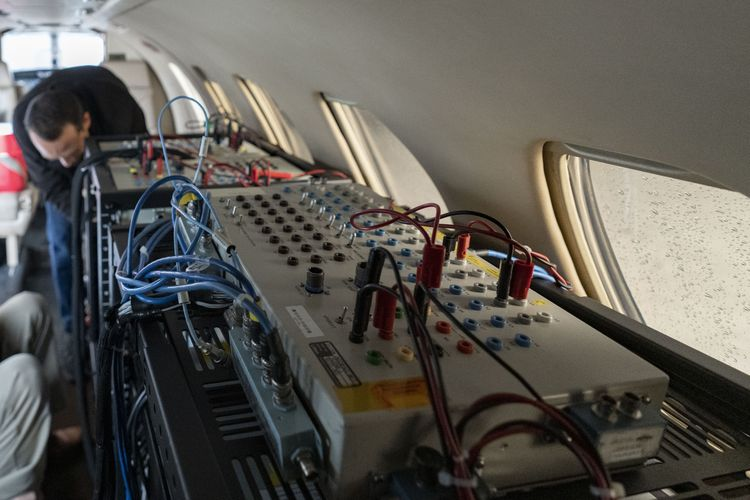Northrop Grumman revealed June 27 that it has successfully tested an advanced air navigation system to allow aircraft to operate in contested, GPS-jammed or -denied airspace. The system will be deployed on Air Force F-22 fighters and Navy E-2D Hawkeye airborne warning and control aircraft, with other platforms to follow.
The system, called EGI-M for Embedded GPS Inertial Navigation System Modernization, was tested in May aboard a Cessna Citation 560 test aircraft. The flight marked the first time the system has been tested with an M-code-capable receiver.
M-code is a jam-resistant GPS signal that can be beamed at target areas from GPS Block III satellites using their high-gain directional antennae. The signals are more powerfully focused, and thus less susceptible to jamming, than general GPS signals, which broadcast over a wide geographical area. M-Code also allows blue force tracking systems to continue to follow U.S. military signals even when general GPS is being jammed in an area. The M-code signals are also encrypted to further reduce the chance of spoofing.
When fully operational, the EGI-M system “will feature a modular platform interface, designed to easily integrate with current platform navigation systems, supporting advanced software and hardware technology updates now and in the future,” a release from Northrop stated.
Precise navigation is critical both for avoiding known threats and putting ordnance on target at a specific time. Adversary airspace is expected to be GPS-jammed, so advanced navigation systems rely on several methods—GPS, inertial navigation, timing, and other, classified techniques, to ascertain precise location.
Northrop’s EGI-M prototype, dubbed the LN-351 system, uses GPS/INS with fiber optic gyro technology and performed at the same level of the LN-251, Northrop’s current GPS navigation system, but with the added M-code capability. Northrop began engineering and manufacturing development of EGI-M in 2018, and critical design review was completed in September 2020. The system has been selected for use with “additional fixed-wing and rotary-wing platforms” across the U.S. military services and allied forces, Northrop said.
The EGI-M is an open-architecture system, which will allow insertion of third-party technology without compromising the system’s cyber security and airworthiness, according to Northrop’s website.
“This flight test is a major step forward in developing our next generation airborne navigation system,” Ryan Arrington, vice president of navigation and cockpit systems at Northrop, said in a statement.


